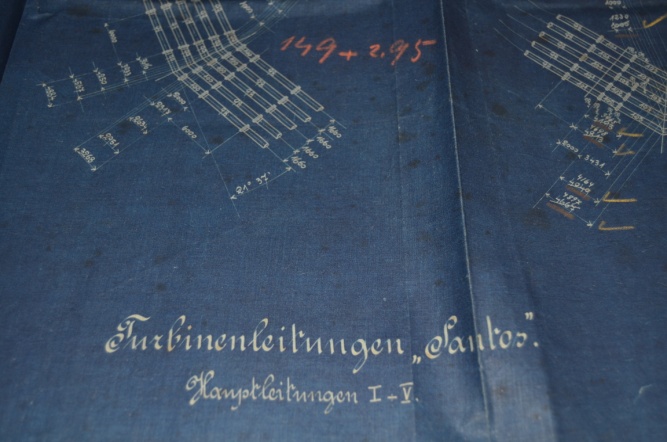History of Electric Power in the State of São Paulo (1890-1960): Industrial Heritage, Landscape, and Environment
In São Paulo state there was a complex historical process, whereby electrification added to the expansion of the western economic frontier (mainly pushed by coffee plantations), alongside the creation of a railway network, bringing together industrialization, urbanization and immigration waves. The “white coal”, i.e. the state’s waterways, provided for power stations that were instrumental for industries located in São Paulo City, Santos, Campinas, and several other booming cities. As a result industries dedicated to textiles, paper, food, sugarcane by-products, and many small manufacturers flourished.
This project focuses on that historical process of electric power introduction, and includes electric companies whose generating units were implanted from 1890 until 1960, such as the now private CPFL, or the still state-owned EMAE, as well as a number of small concessionaries.
This is an interdisciplinary joint effort of researchers from three state universities (USP, UNICAMP, UNESP), in the fields of History, Industrial Heritage, Geography, Museology and Archivology. A sample of ca 60 sites with the most representative power stations scattered throughout the state was selected to search for the remaining memory and data. Field trips were planned to be regularly carried out at those sites to unveil their historical importance, and to diagnose the corresponding memory preservation, including the industrial heritage and the material culture, indicating their state of organization and conservation.
Part of the team belongs to the Information Sciences to create out of the field reports and uncovered documents a thesaurus with the vocabulary related to the electrical industrial
heritage and environment, so as to generate a relational data base and appropriate tools to allow the future public access to the information retrieved.
SUMMARY OF RESULTS TO DATE AND PERSPECTIVES
The project findings corroborate that power plants were first built by local entrepreneurs – plantation owners, industrialists and small businessmen, using machinery and knowhow supplied by importing houses, and sometimes aided by Brazilian engineers. Soon the prospective profit attracted the international capital, and a new phase started, bringing corporations like Light and Power Co. to the São Paulo – Rio de Janeiro axis, and Amforp – which succeeded in buying up local power stations and creating the strong regional CPFL network. What is remarkable and unique in the international context is the longevity of such installations – quite a number of those plants have worked for more than a century with the original equipment, whereas others have upgraded ancient turbines and generators, yet conserving buildings and the surrounding environment.
The surviving industrial heritage has been studied under the light of the respective history of technology. The site evaluation involves dams, water pipes, power houses, electrical generators, and ancillary equipment, to envisage conservation proposals. An analysis of the musealization potential associated with the sites has also been developed, assuming a broad and modern understanding of the museum concept, to thus foster the future public circulation of the associated memory. Another feature of the undertaken survey has been the discovery and evaluation of dispersed documentation. Ancient written records, photos, and technical drawings have been uncovered inside the power plants, or dispersed throughout municipal or private archives, as shown by an ex-Light & Power warehouse at Traição or the CPFL set of archives now in Jundiaí.
The waterway damming for the construction of power plants represented both a major intervention in the natural landscape and at the same time it paradoxically helped preserve the environment, given the wild later urban development. On the other hand the acute degeneration of the rivers caused by domestic pollution has hindered the functioning of several hydroelectric units. Drinking water, sewage treatment, and leisure areas have become increasingly scarce, and the present draught has highlighted the need for an integrated reexamination of hydro-energetic issues. A major effort was undertaken in this direction during the September 2014 public colloquium Water and Energy: Crisis and Challenges, followed by interviews and TV broadcasts.
There is also a noteworthy effort to coordinate with international history of electrification groups, including Argentina, Portugal and Spain, through conferences and the signing of cooperation agreements.
Main Publications
Furlan S, Alves Filho E, Limnos G. 2014. Paisagem e ambiente das primeiras usinas hidrelétricas do Estado de São Paulo. Congresso Iberoamericano de Estudos Territoriais e Ambientais. São Paulo, CD ROM
Magalhães G (org.). 2012. História e Energia. Memória, informação e sociedade. São Paulo: Alameda. ISBN 9788579391491, 376 p.
Magalhães G. 2013. A milestone in the Atlantic rainforest: Itatinga dam and its power station. 24th International Congress of History of Science, Technology and Medicine. Manchester, CD ROM
Magalhães G. 2014. Café, ferrovias, imigração e a eletrificação no Estado de São Paulo (1900/40). II Congresso Internacional sobre Patrimônio Industrial. Porto, CD ROM
Magalhães G. 2014. Is small really beautiful? Controversies around operating early Brazilian power plants. Electric Worlds: Creations, Circulations, Tensions and Transitions, from the 19th to the 21st Centuries (Conference). Paris, CD ROM
Magalhães G (org.). 2015. Projeto Eletromemória: História e Paisagem (dossiê). Revista Labor & Engenho, vol. 9, n. 1
Meneguello C. 2014. Novos espaços, novas invisibilidades: sobre recentes processos de valorização do patrimônio industrial em cidades brasileiras. II Congresso Internacional sobre Patrimônio Industrial. Porto, CD ROM
Midori M, Cury M X, Magalhães G. 2014. A musealização do patrimônio industrial no Estado de São Paulo: uma análise do setor elétrico. II Congresso Internacional sobre Patrimônio Industrial. Porto, CD ROM
Vitoriano MCCP. 2014. Modelos e políticas de preservação de arquivos privados no Brasil. XV ENANCIB. Belo Horizonte, CD ROM

 Project logo Itatinga turbine pipelines (1906)
Project logo Itatinga turbine pipelines (1906)

 Americana power plant (1948) Turbine and generator set, Jaguari (1919)
Americana power plant (1948) Turbine and generator set, Jaguari (1919)

 Corumbataí control panel (1925) Water dam, Salto do Pinhal (1911)
Corumbataí control panel (1925) Water dam, Salto do Pinhal (1911)

 Santa Alice power house, S. José. Rio Pardo (1907) Salto power plant flood (1929)
Santa Alice power house, S. José. Rio Pardo (1907) Salto power plant flood (1929)

